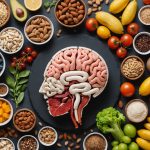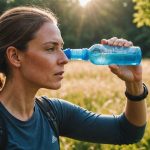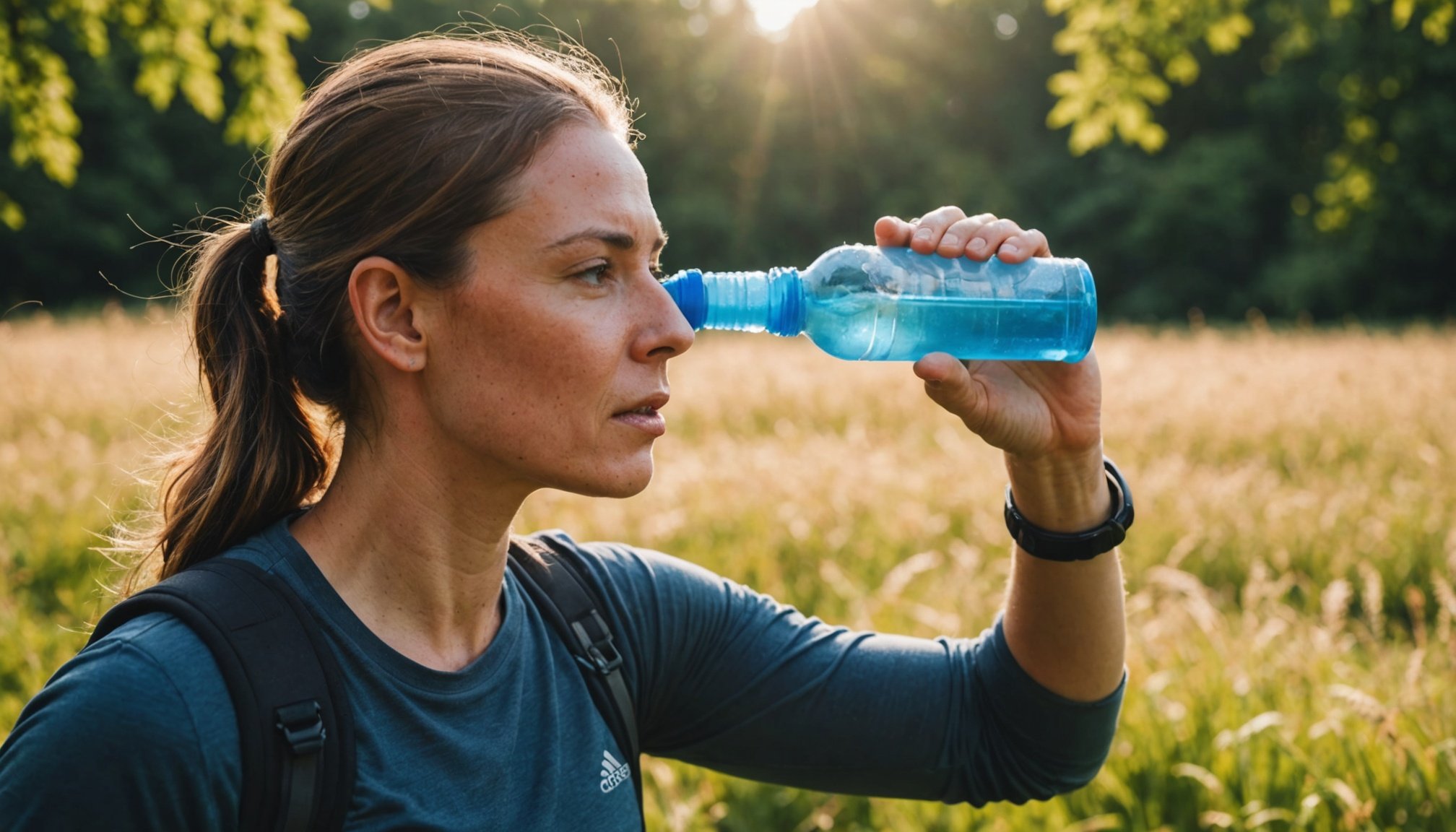Staying Hydrated in UK Heatwaves: Effective Strategies to Keep You Safe
As the UK experiences increasingly hot and prolonged heatwaves, due in part to climate change, it is crucial to prioritize hydration to protect your health. Here’s a comprehensive guide on how to track and maintain your hydration levels during these extreme weather conditions.
Understanding the Risks of Heatwaves
Heatwaves are not just uncomfortable; they can be deadly. A recent study highlighted that climate change was responsible for over half of the heat-related deaths in Europe in 2022, with approximately 38,000 deaths attributed to extreme heat.
Have you seen this : How can you ensure a balanced diet while navigating eating out and social events?
“Even slight rises in temperature can lead to severe public health consequences,” notes Theokoff, a researcher at Imperial College London. “Heat-related deaths escalate rapidly when temperatures exceed what individuals are accustomed to.”
Recognizing the Signs of Dehydration
Before we dive into the strategies for staying hydrated, it’s essential to recognize the signs of dehydration. Here are some key indicators:
Also read : How can practicing yoga contribute to physical fitness and weight management?
- Dry mouth and throat
- Dark yellow or brown urine
- Fatigue and weakness
- Headaches and dizziness
- Rapid heartbeat
- Low blood pressure
If you or someone you know is experiencing these symptoms, it is crucial to seek medical help immediately.
Effective Hydration Strategies
Drinking Water Regularly
The most straightforward way to stay hydrated is to drink plenty of water. Here are some tips to make sure you’re drinking enough:
- Drink at least 8-10 glasses of water per day: This is a general guideline, but your specific needs may vary based on your activity level, age, and the temperature.
- Monitor your urine output: If your urine is pale yellow or clear, you are likely well-hydrated. Dark yellow or brown urine indicates you need to drink more water.
- Avoid sugary and caffeinated drinks: While these drinks may quench your thirst temporarily, they can actually dehydrate you further in the long run.
Using Hydration Apps and Tools
Technology can be a great ally in tracking your hydration. Here are some tools you can use:
- Hydration apps: Apps like Waterlogged, Hydro Coach, and Plant Nanny allow you to set reminders and track your water intake.
- Smart water bottles: Bottles like Hidrate Spark and Ozmo Water Bottle track your water consumption and send reminders to your phone.
Incorporating Hydrating Foods
In addition to drinking water, you can also consume foods that are high in water content to help with hydration:
- Watermelon: About 92% water
- Cucumbers: About 96% water
- Celery: About 95% water
- Strawberries: About 92% water
Staying Cool and Avoiding Heat-Related Illnesses
Staying cool is as important as staying hydrated. Here are some strategies to help you stay cool and avoid heat-related illnesses:
Stay Indoors During Peak Heat Hours
- Avoid outdoor activities between 11 AM and 3 PM: These are the hottest hours of the day, and staying indoors can help you avoid exposure to extreme heat.
- Use air conditioning: If possible, stay in air-conditioned spaces to keep your body temperature down.
Wear Cool Clothing
- Wear lightweight, light-colored clothing: Light colors reflect the sun’s rays, and lightweight fabrics allow for better airflow.
- Avoid heavy or dark clothing: These can trap heat and make you feel hotter.
Check on Vulnerable Individuals
- Older people and young children are at a higher risk: Check on your elderly neighbors or relatives living alone to ensure they are staying cool and hydrated.
- People with chronic health conditions: Those with heart disease, diabetes, or other chronic conditions may be more susceptible to heat-related illnesses.
Practical Advice for Daily Life
Here are some practical tips to help you stay hydrated and cool in your daily life:
At Home
- Keep your home cool: Use curtains or blinds to block out the sun during the hottest parts of the day.
- Use cool compresses or cold water: Applying cool compresses or taking a cool bath can help lower your body temperature.
At Work
- Take regular breaks: If you work outdoors or in a hot environment, take regular breaks in a cool, shaded area.
- Drink water frequently: Keep a water bottle with you at all times and drink from it regularly.
During Outdoor Activities
- Bring plenty of water: If you are going to be outdoors for an extended period, bring enough water to last you the entire time.
- Avoid strenuous activities: Try to avoid engaging in strenuous activities during the hottest parts of the day.
Table: Comparing Hydration Strategies
| Strategy | Benefits | Drawbacks |
|---|---|---|
| Drinking Water Regularly | Easy to implement, essential for hydration | Can be boring, may not be enough for high activity levels |
| Using Hydration Apps and Tools | Provides reminders, tracks intake | Requires a device, may be distracting |
| Incorporating Hydrating Foods | Adds variety to hydration routine, nutritious | May not provide enough hydration on its own |
| Staying Indoors During Peak Heat Hours | Reduces exposure to extreme heat | May not be feasible for everyone, especially those who work outdoors |
| Wearing Cool Clothing | Helps reflect sun’s rays, allows for airflow | May not be suitable for all occasions or workplaces |
| Checking on Vulnerable Individuals | Ensures safety of those at higher risk | Requires time and effort |
Quotes from Experts
- “Our research, in conjunction with earlier studies, demonstrates that even moderate heat can result in heat-related fatalities, especially among vulnerable populations,” says Thessa Beck, lead researcher on a study about the impact of climate change on heat-related deaths.
- “Fast-tracking implementation and better coordination of efforts by governments, water authorities, and healthcare providers are urgently needed to prevent and reduce health impacts,” emphasizes a report from the European Environment Agency.
Staying hydrated and cool during heatwaves is crucial for your health and well-being. By drinking water regularly, using hydration tools, incorporating hydrating foods, staying indoors during peak heat hours, and checking on vulnerable individuals, you can significantly reduce your risk of heat-related illnesses.
Remember, climate change is making heatwaves more frequent and intense, so it’s essential to be proactive about your hydration and cooling strategies. Here’s a final piece of advice from Theokoff: “Even slight rises in temperature can lead to severe public health consequences. Stay vigilant, stay hydrated, and stay cool.”
By following these strategies, you can help ensure your safety and the safety of those around you during the hot weather. Stay safe, and make sure to drink plenty of water throughout the day.











